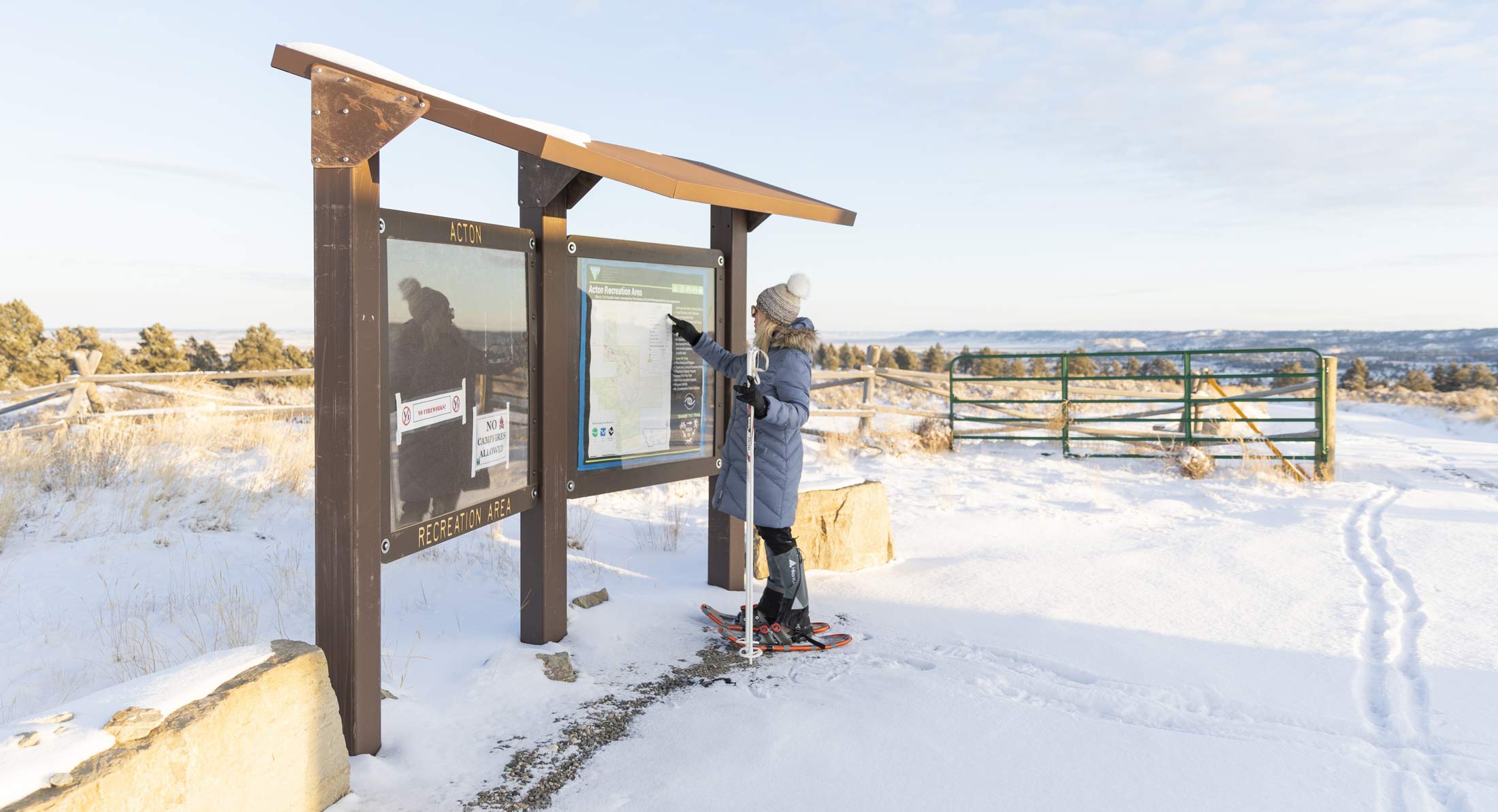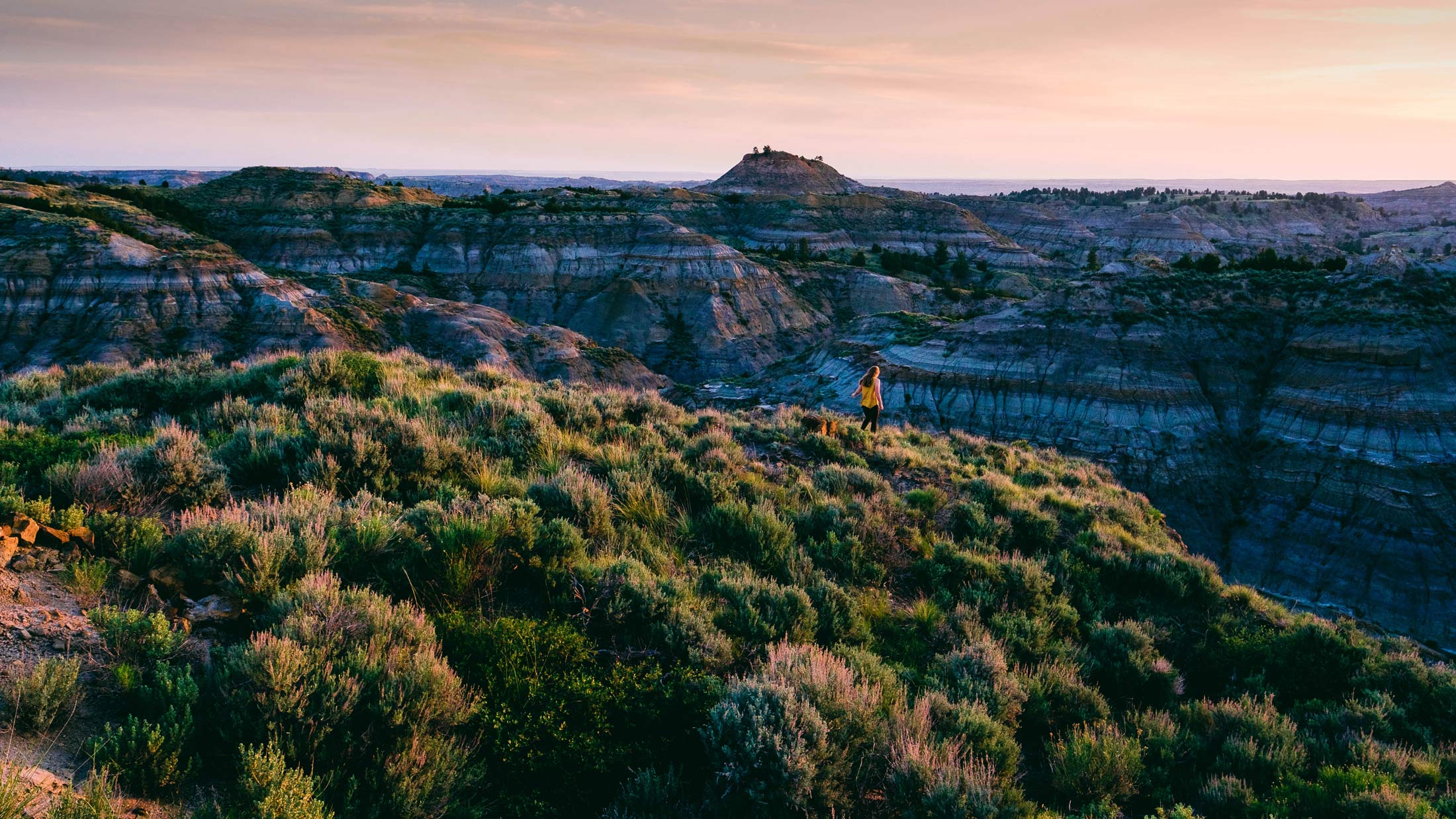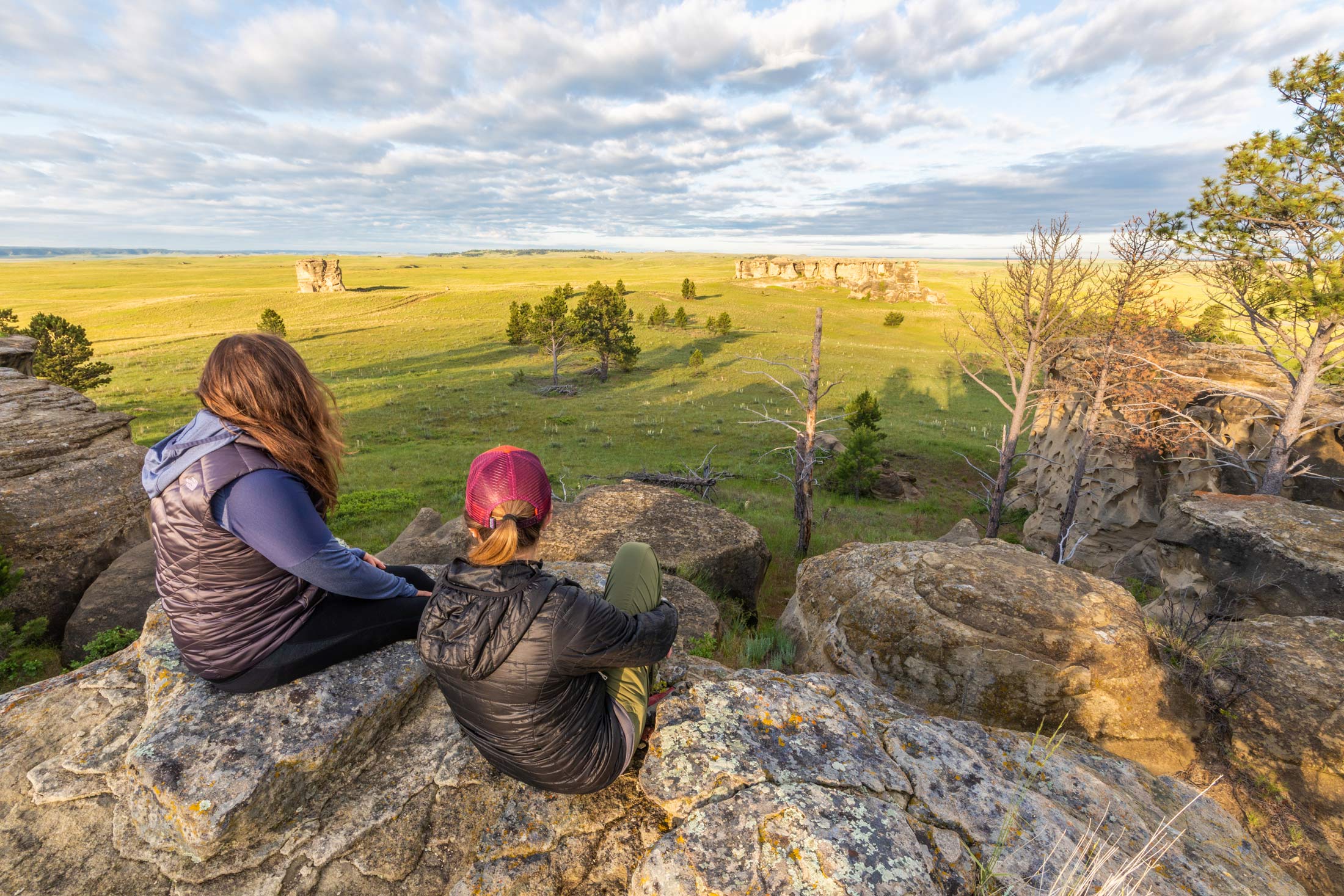Cowboy Adventures
From his very first visit to the West, Roosevelt was enamored by the badlands, big game hunts and cowboy lifestyle. After his wife Alice and mother died on the same day and his third term in the New York State Assembly ended, he found solace in the West where he started his ranch and became a cowboy. Though it was obvious in many ways that Roosevelt was a city boy from the East Coast, his determination and stamina impressed even seasoned cowboys.
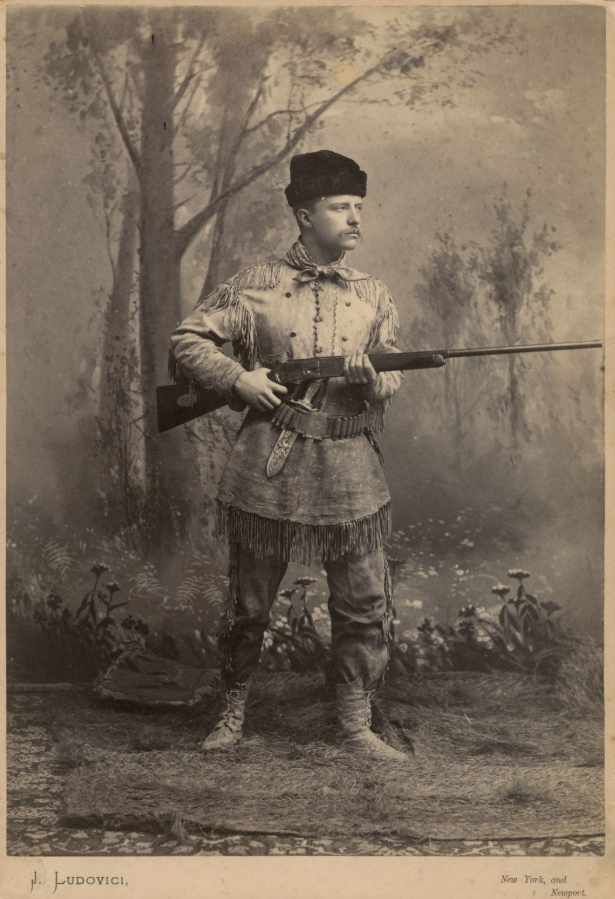
Photo courtesy of Theodore Roosevelt Digital Library, Dickinson State University.
One of his well-known wild west tales took place in Mingusville, Montana, now named Wibaux. During this instance, Roosevelt had spent several days riding in the region in search for stray horses. When he came across Nolan Hotel, he heard gunshots and shouting coming from inside. Because he was cold, tired and hungry, he went against his better judgement and stepped inside. Recounting this story in his autobiography Roosevelt wrote:
A shabby individual in a broad hat with a cocked gun in each hand was walking up and down the floor talking with strident profanity. As soon as he saw me, he hailed me as “Four Eyes,” in reference to my spectacles, and said, “Four Eyes is going to treat.” I joined in the laugh and got behind the stove and sat down. He followed me, and though I tried to pass it off as a jest this merely made him more offensive. In response to his reiterated command that I should set up the drinks, I rose, and struck him quick and hard with my right just to one side of the point of his jaw, hitting with my left as I straightened out, and again with my right. When he went down he struck the corner of the bar with his head and was senseless.
The story about his nickname, “Four Eyes” and his fighting reputation spread across cowboy country. It certainly wasn’t the only time he was the talk of the Southeast Montana territory though. During Roosevelt’s time living at his North Dakota ranch, he couldn’t completely escape the “walk and talk” of the East Coast. One day while talking to a fellow cowboy when he told the man to “hasten quickly there, now!” The cowboy, amused by the comment, began spreading the story around to the point where cowboys started ordering a Hasten Quickly, or a stiff drink, at bars across the region.
Tip: Stop into one of those establishments in Miles City or Wibaux and try ordering a “Hasten Quickly” to see if your bartender knows what you’re talking about. We guarantee this is a novel conversation-starter. We’d also recommend at stop at Beaver Creek Brewery in Wibaux where they have the “Roosevelt” pizza on menu.
Suggested Route: Head east out of Glendive on Interstate 94 for 28 miles, take exit 241 to Wibaux.
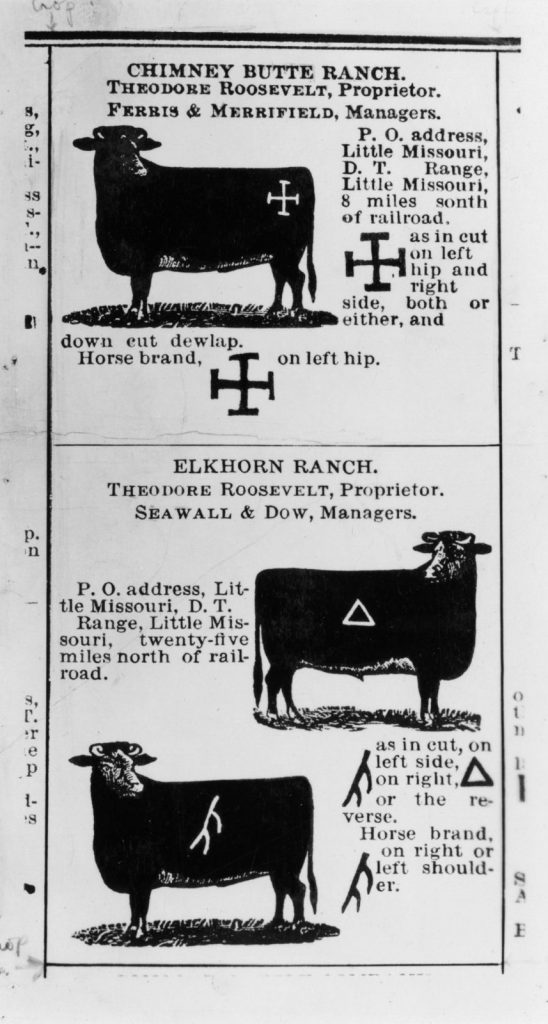
Teddy Roosevelt branded up to 6,000 cows with one of his three brands; a triangle, an elkhorn or the Maltese cross.
Photo courtesy of Theodore Roosevelt Digital Library, Dickinson State University
In the early days of the Eastern Montana Stockgrowers Association, Roosevelt participated as a representative for the Little Missouri region. At one of their most notable meetings at Miles City in April 1884 Roosevelt, alongside ranchers, started discussions to end livestock rustling. These conversations led to the creation of several laws that protect livestock from disease and theft that are still in effect in Montana today.
Tip: Miles City still holds many authentic cowboy experiences. Observe a weekly cattle auction alongside contemporary cattle ranchers or go to the world-famous Miles City Bucking Horse Sale in May.
Suggested Route: Take Interstate 94 west out of Glendive for 75 miles. Take exit 141 into Miles City. Little Bighorn Battlefield National Monument.
Medicine Rocks State Park
Roosevelt also traveled farther south in the state, awed by the beauty of what eventually became Medicine Rocks State Park. In his 1885 book, Hunting Trips of a Ranchman he wrote about the Medicine Buttes saying, “Altogether it was as fantastically beautiful a place as I have ever seen; it seemed impossible that the hand of man should not have had something to do with its formation.” Clearly, he was impressed by the eerily-fascinating sandstone rock formations. Years of weathering gives the boulders a “Swiss-cheese” look. Adding to years of inscriptions and pictographs seen on the spires and pillars, Roosevelt left his own initials (though it’s prohibited to do so today).
Tip: Just an 1.5 hours southeast of Glendive between Baker and Ekalaka, this park offers hiking, biking, camping and abundant stargazing opportunities.
Suggested Route: Head east out of Glendive on Interstate 94 for 28 miles, take exit 241 to Wibaux. Continue south on Highway 7 out of Wibaux for 68 miles to get to Medicine Rocks State Park. Follow the signs into the park.
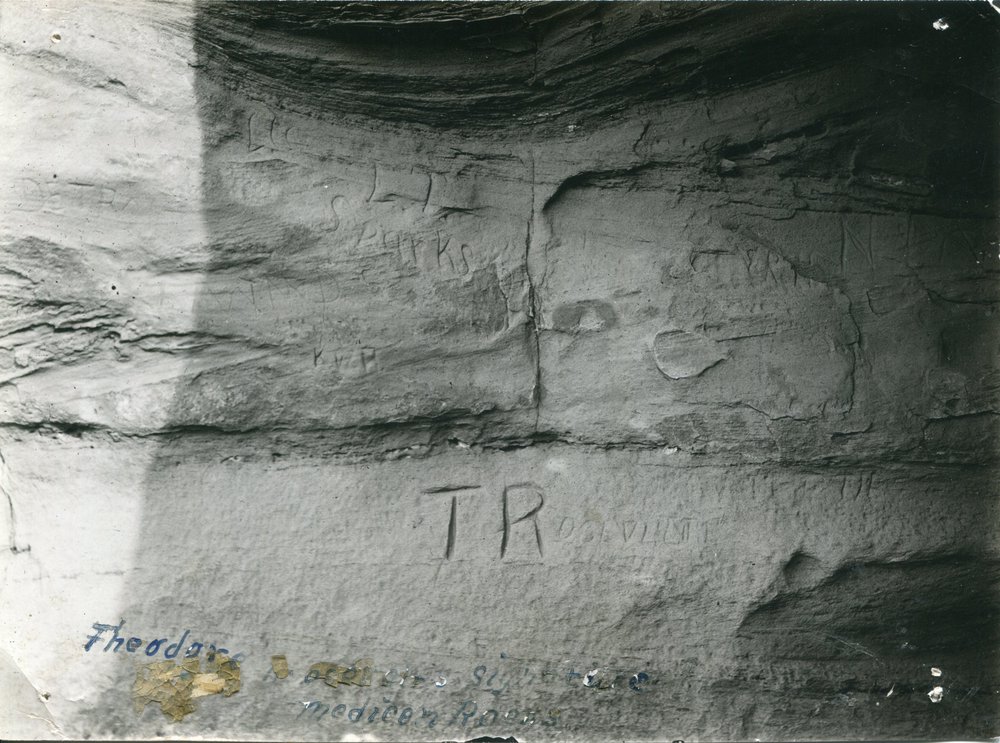
Art and Literature
While living in the West as a cattle rancher, Roosevelt would spend all day on the saddle and at night worked passionately writing novels. We suggest reading Hunting Trips of a Ranchman, which is an autobiographical work of his time in the Dakotas and Badlands of Montana. Many of writings during this time were also published in Eastern magazines, glamorizing the lifestyle in the rugged, wild West.
Upon becoming President in 1900, Roosevelt sought 200 paintings of Indian warriors who survived the Battle of the Little Bighorn, 25 years prior. For this work, he commissioned emerging American painter Joseph Henry Sharp. A cabin was built in Crow Agency near the Little Bighorn Battlefield for Sharp to complete this assignment. Many of those paintings are now on display in public institutions, including the Smithsonian museums in Washington, D.C. Others are available for viewing in a more intimate setting, closer to their source at the Big Horn County Museum in Hardin, Montana.
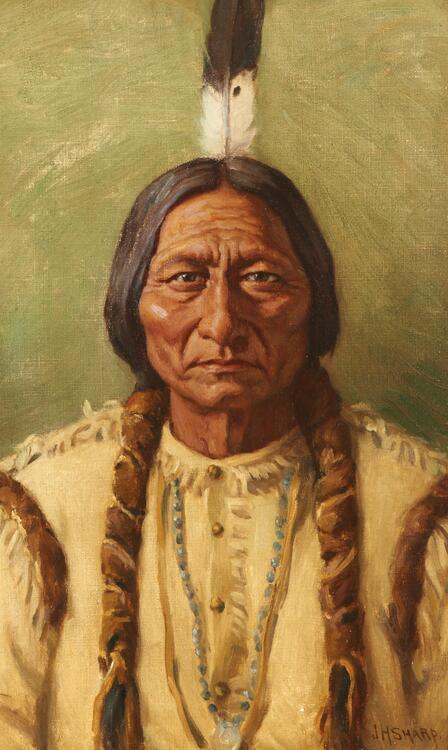
Tip: Plan a full day at the Little Bighorn Battlefield National Monument and walk the paths where the Northern Plains Indians fought and defeated Lt. Col. Custer and the 7th Cavalry in June 1876. Next, stop at the Big Horn County Historical Museum in Hardin to view some of JH Sharp’s early work – the originals are simply stunning.
Suggested Route: Take Interstate 94 west out of Glendive for 159 miles. Take exit 49 and head south on MT-47 for 29 miles. Merge onto I-90 for 14 miles. Take the exit for US-212 East and follow the signs on your right for the Battlefield. To get to Billings, get back on I-90 west for 57 miles. Take exit 452 and turn right. Go 5 miles to the airport, and the museum will be at the end of Terminal Circle.
Hunting and Conservation
For Roosevelt, it was love at first hunt. In 1883 he first traveled to the badlands of the Dakotas and Montana to hunt buffalo, though the conditions and terrain were extreme, he found it exhilarating. Although years later after Roosevelt sold his ranches and returned to live full-time in the East, he always traveled back to Montana for hunting trips. In 1893, his friend Paul McCormick built a cabin at the confluence of the Yellowstone and Bighorn Rivers and hosted Roosevelt for many of his hunting expeditions. This historic cabin was moved to Billings in 1954 and is home of the Yellowstone County Museum. Inside you can also see a portrait of Roosevelt signed and given to McCormick in 1908.
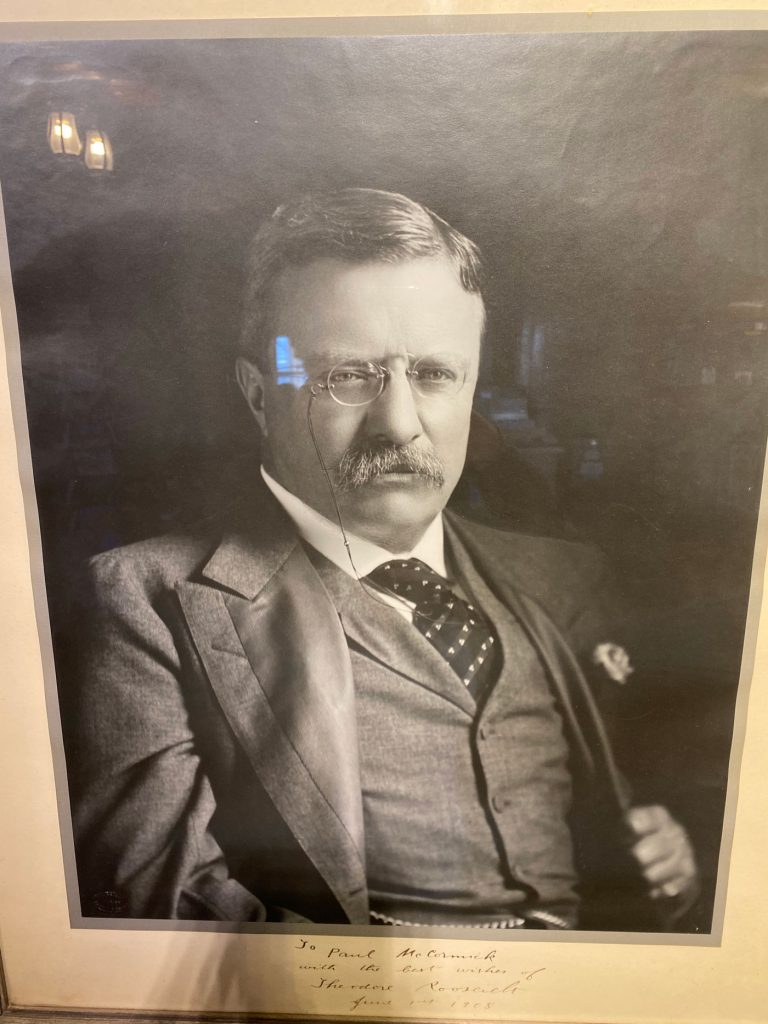
It wasn’t just the hunting opportunities for Roosevelt though, he was captivated by Montana and quickly understood the importance of conservation and the wise use of natural resources. His time in the West deeply influenced his years as president. As a commitment to future generations, he established the United States Forest Service, developed more national forests (including many in Montana), invented National Wildlife Refuges, expanded National Parks and designated National Monuments. Altogether Roosevelt’s work protected 230 million acres of land, much of that remains public land today for all, and future generations, to enjoy.


